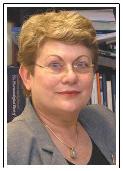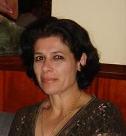IBM Research - Medical Informatics Day 2010
Translational Medicine: Is There A Translator
Around?!
From Bench to Bedside — Developing an Ecosystem around
Evidence Generation and Use at The Point of Care
An IBM Research Medical Informatics PIC sponsored event
October 31, 2010
IBM Haifa Research Lab
Haifa University Campus
Haifa, Israel
Abstracts
Welcome Remarks and Introduction
Uzia Galil
 Uzia Galil, is the founder of the Galil Center for Medical
Informatics, Telemedicine and Personal Medicine at the
Technion's Bruce Rapaport Faculty of Medicine in Haifa.
Uzia Galil, is the founder of the Galil Center for Medical
Informatics, Telemedicine and Personal Medicine at the
Technion's Bruce Rapaport Faculty of Medicine in Haifa.
Uzia Galil also founded Elron Electronic Industries in 1962
and through Elron founded more than 20 companies worldwide.
Until 1999 he served as President/CEO and Chairman of Elron,
Chairman of Elbit Systems Ltd. and Chairman or Board member
of many of the subsidiaries or related companies. In 1999 he
founded Uzia Initiatives and Management Ltd. that
specializes in the promotion and nurturing of new
businesses, primarily in the field of Information Technology
for Personalized Medicine, mobile communication and
electronic commerce and serves as its Chairman and CEO. He
continues to be Chairman of the Board of Zoran Corp.
Uzia Galil has received Honorary Doctorate from the
Technion, the Weizman Institute, Polytechnic University, Ben
Gurion University, the Solomon Bublick Prize Laureate from
the Hebrew University and the prestigious Israel Prize for
his contribution to the development of the Israel hi-tech
industry.
Oded Cohn
 Oded Cohn the director of the IBM Research Lab in Haifa,
first joined IBM in 1982, when he started with the IBM Haifa
Scientific Center as a Research Fellow. Before assuming the
role of lab director, Oded served as department group
manager for software and services at the lab. Since joining
IBM Haifa, he has been involved with research and product
development in a variety of areas, including: storage
subsystems, high availability and business continuity,
network design, distributed and parallel systems, file
systems, Java technology, medical information systems, along
with solutions and software in support of services.
Oded Cohn the director of the IBM Research Lab in Haifa,
first joined IBM in 1982, when he started with the IBM Haifa
Scientific Center as a Research Fellow. Before assuming the
role of lab director, Oded served as department group
manager for software and services at the lab. Since joining
IBM Haifa, he has been involved with research and product
development in a variety of areas, including: storage
subsystems, high availability and business continuity,
network design, distributed and parallel systems, file
systems, Java technology, medical information systems, along
with solutions and software in support of services.
Oded was a member of the advanced R&D storage systems team
in San Jose, CA from 1991 to 1992. Oded received his BSc
(1979) and MSc (1982) in computer science from the Technion
Institute of Technology in Israel. He is the author and
co-author of over a dozen US patents and has been awarded
IBM Outstanding Technical Achievement and Outstanding
Invention Awards. Currently, Oded is an adjunct lecturer at
the Computer Science Department of the Haifa University,
teaching Computer Communication Networks.
Amnon Shabo
 Amnon Shabo (Shvo), PhD, works at IBM Research Lab in Haifa
as a research staff member specializing in health
informatics and heads the Healthcare & Life Sciences
Standards Program in IBM. He holds leading positions in HL7
(Health Level 7 - a major standards developing organization
dedicated to health information):
Amnon Shabo (Shvo), PhD, works at IBM Research Lab in Haifa
as a research staff member specializing in health
informatics and heads the Healthcare & Life Sciences
Standards Program in IBM. He holds leading positions in HL7
(Health Level 7 - a major standards developing organization
dedicated to health information):
* A co-chair of the Clinical Genomics Special
Interest Group in HL7, as well as its modeling facilitator
and primary contributor;
* A co-chair of the RIMBAA (RIM-Based Application
Architecture Work Group);
* A co-editor of the HL7 CDA (Clinical Document
Architecture) Release 2 standard and the CCD (Continuity of
Care Document) Implementation Guide;
* A co-editor of the Family History Standard.
Amnon is leading the contribution of the Haifa Healthcare &
Life Sciences group to the Hypergenes project
(http://www.hypergenes.eu/) funded by the European Union to
explore the genetic background of essential hypertension – a
study conducted by a consortium of about twenty European
partners.
Amnon also specializes in longitudinal and
cross-institutional Electronic Health Records (EHR). A
pioneer of the Independent Health Record Banks (IHRBs)
vision, Amnon has promoted this idea for the past decade in
various venues including the US Congress where he gave talk
at a special briefing to Congressional Policy Stuff (2007)
on the new legislation introduced on IHRB.
A Personal History within the Hypertension Saga: From
Bench to Bedside
Daniele Cusi, University of Milan
Today, no-one actually knows how to handle the complexity of
the interactions of the approximately 30,000 genes that make
up the human genome - both interacting with themselves as
well as with the environment - nor how to relate events at
the molecular level with clinical phenotypes of patients
affected by specific diseases. This problem dramatically
influences every aspect of medical research and practice in
the near future. Not only will it dominate predictive
genetics and genetic counseling, but it will also be of
major importance for clinical decision-making, as new
diagnostic tools and treatments become available, not only
when genetic manipulation is involved. Although mathematical
modeling may solve some of these problems, careful analysis
of the relationship between the molecular pathology of a
certain disease and its inherent variation observed in the
clinical phenotypes represented in large populations is
always required.
The Hypergenes project proposes to use EH as a paradigm of a
chronic complex disease, since its pathogenesis encompasses
heterogeneous genetic, lifestyle and environmental factors.
In spite of an exponential growth of genetic research in EH
over the last two decades, up until now researchers have
failed to identify common genes with large impact on EH in
humans. The potential cause of this failure is that there
have been no significant and coordinated efforts to overcome
the classical formal genetic approach in the study of EH, a
limitation that applies to virtually all genetic research on
chronic complex diseases. The project aims at mapping the
path from genotype to phenotype in complex traits, to reach
the possibility of personalized medicine in a similar
multidisciplinary scenario.
Daniele Cusi, MD
Chairman, Division of Nephrology, San Paolo Hospital,
Milano
Director, Genomics and Bioinformatics Platform,
Fondazione Filarete, University of Milano
 Daniele Cusi, MD, Professor of Nephrology and Chairman of
the Graduate School of Nephrology of Milan University, with
long-standing expertise in genetics and genetic epidemiology
of hypertension and in pathogenetic mechanisms of
hypertension.
Daniele Cusi, MD, Professor of Nephrology and Chairman of
the Graduate School of Nephrology of Milan University, with
long-standing expertise in genetics and genetic epidemiology
of hypertension and in pathogenetic mechanisms of
hypertension.
His major research achievements have been the demonstration
of increased renal Na reabsorption before the development of
hypertension of some forms of human and rat hypertension;
the demonstration of the role of adducin in the development
of salt sensitive hypertension in humans and rats; the
development of simplified tests for definition of salt
sensitivity in humans.
High Throughput Screens Highlight Alternative Splicing
Modulations in Alzheimer's and Parkinson's Disease
Hermona Soreq, Hebrew University of Jerusalem
In Alzheimer's and Parkinson's disease (AD, PD), synaptic
functioning fails and cholinergic or dopaminergic neurons
die due to as yet unclear mechanism(s). Here, we report the
results of high throughput screens which suggest that
changes in alternative splicing of brain and leukocyte mRNA
transcripts are likely to be involved. In the AD brain, we
observed massive changes in alternative splicing profiles.
When experimentally tested, parallel manipulations caused
synapse loss in primary neuronal cells and led to learning
and memory impairments in treated mice. In PD patients'
leukocytes, we found stimulus-induced changes in mRNA
transcripts from nucleated blood cells compared to healthy
controls. Distinct leukocyte alternative splicing profiles
were further observed in the same individuals before and
after sub-thalamic deep brain stimulation (DBS)
neurosurgery, and in operated patients with or without
electrical stimulus (ON-and OFF-stimulus). Using these
profiles, we were able to differentiate pre-surgery from
post-surgery patients. Furthermore, the observed changes
were largely reversed following 1 hour OFF-stimulus, and the
extent of changes correlated with the neurological efficacy
of the DBS neurosurgery. Importantly, molecular expression
level signatures of either 29 or 6 transcripts discriminated
controls from both advanced and early PD patients or
patients with other neurological diseases, pre- from
post-surgery patients and ON-from OFF-stimulus conditions.
Our findings present alternative splicing as a major player
in both AD and PD, suggest new surrogate markers for early
blood test diagnostics and propose novel target transcripts
for intervention early in the process of these and other
neuroinflammation-associated or DBS-treatable neurological
diseases.
Hermona Soreq, PhD
Professor, Faculty of Science
The Hebrew University of Jerusalem
 Hermona Soreq is the The Charlotte Schlesinger Professor of
Molecular Biology at the University's Alexander Silberman
Institute of Life Sciences and is a member of the
University's Edmond and Lily Safra Center for Brain
Sciences. A leader in the field of cholinesterase activities
and their functions in the CNS and periphery, Soreq has
published over 240 peer-reviewed journal articles and seven
books. She has served as head of the Silberman Institute of
Life Sciences (1995-2000) and as the first elected woman
Dean of the Hebrew University's Faculty of Science
(2005-2008), then returned to devote most of her time to her
own research and to leading her research team. She
participates in several fundamental collaborative research
projects with top scientists in Israel and around the world,
consults the Israeli Ministers of Health, Commerce and
Science, is a member of the European Community's top
advisory committee on Health related issues and was the
elected President of the Israeli Society of Biochemistry and
Molecular Biology (2000-2002). Internationally recognized
for her contributions to molecular neurobiology, Professor
Soreq frequently lectures at universities around the world,
including UC Berkeley, UCSD, MIT, the University of Chicago,
the Max Planck Institutes in Berlin and Gottingen, Research
centers in Japan, China and Korea and the College de France,
among others. The recognition of her role has led to
national and international awards including honorary PhD
degrees in Chemistry from the University of Stockholm
(1996), in Medicine from the University of
Erlangen-Nuremberg (2007), in Science from the Ben-Gurion
University in Beer-Sheva (2007) as well as National Prizes
(an Israeli Ministry of Health Prize (2000), the Landau
Prize for Biomedical Research (2005) and the Teva Prize for
Molecular Medicine (2006)) and International ones (the Lise
Meitner Alexander Humboldt Research Prize, 2009; and a
Miller Fellowship at UC Berkeley, 2009). She is also an
Adjunct Research professor at the Arizona State University
BioDesign Institute, the inventor of 12 patents and has 3
different molecules (2 recombinant proteins, one DNA-based
drug) at different stages of clinical trials.
Hermona Soreq is the The Charlotte Schlesinger Professor of
Molecular Biology at the University's Alexander Silberman
Institute of Life Sciences and is a member of the
University's Edmond and Lily Safra Center for Brain
Sciences. A leader in the field of cholinesterase activities
and their functions in the CNS and periphery, Soreq has
published over 240 peer-reviewed journal articles and seven
books. She has served as head of the Silberman Institute of
Life Sciences (1995-2000) and as the first elected woman
Dean of the Hebrew University's Faculty of Science
(2005-2008), then returned to devote most of her time to her
own research and to leading her research team. She
participates in several fundamental collaborative research
projects with top scientists in Israel and around the world,
consults the Israeli Ministers of Health, Commerce and
Science, is a member of the European Community's top
advisory committee on Health related issues and was the
elected President of the Israeli Society of Biochemistry and
Molecular Biology (2000-2002). Internationally recognized
for her contributions to molecular neurobiology, Professor
Soreq frequently lectures at universities around the world,
including UC Berkeley, UCSD, MIT, the University of Chicago,
the Max Planck Institutes in Berlin and Gottingen, Research
centers in Japan, China and Korea and the College de France,
among others. The recognition of her role has led to
national and international awards including honorary PhD
degrees in Chemistry from the University of Stockholm
(1996), in Medicine from the University of
Erlangen-Nuremberg (2007), in Science from the Ben-Gurion
University in Beer-Sheva (2007) as well as National Prizes
(an Israeli Ministry of Health Prize (2000), the Landau
Prize for Biomedical Research (2005) and the Teva Prize for
Molecular Medicine (2006)) and International ones (the Lise
Meitner Alexander Humboldt Research Prize, 2009; and a
Miller Fellowship at UC Berkeley, 2009). She is also an
Adjunct Research professor at the Arizona State University
BioDesign Institute, the inventor of 12 patents and has 3
different molecules (2 recombinant proteins, one DNA-based
drug) at different stages of clinical trials.
Translational Infostructure: The Biomedical Information
Infrastructure for Hypergenes & EuResist
Ariel Farkash, Haifa Research Lab
Healthcare & Life Sciences (HCLS) data and knowledge
warehousing is a central component of the translational
medicine (TM) infostructure, enabling semantic
interoperability across the various stakeholders of the TM
endeavor, from bench to bedside and on to community and
policy making. By using HCLS worldwide accepted information
standards, along with common HCLS terminologies, it is
possible to deploy rich data models atop of a warehouse,
allowing 'semantic warehousing' where all implicit semantics
in the stakeholder source systems is made explicit and thus
is subject to objective and independent analysis. Once data
and knowledge from diverse data sources are integrated into
the warehouse, the semantic richness of the warehouse model
breaks the boundaries of information 'silos' which are so
common in the HCLS world.
Nevertheless, the richness, heterogeneous and comprehensive
nature of the warehouse data models makes it difficult to
HCLS information consumers to utilize and analyze the data
and knowledge in the warehouse. These consumers often prefer
to use a much more focused data model that is tailored to
their view and analysis requirements. The TM infostructure
addresses this challenge by offering tools for generating
data marts, which are persisted and optimized subsets of
warehouse information, designed by the consumer's model and
terminology. At same time, it is also possible to explore
the entire warehouse using innovative technologies such as
XML databases and their powerful query language XQUERY that
allows the mixture of relational and XML queries in a single
statement.
A prototype of such translational infostructure is the
Biomedical Information Infrastructure (BII) serving the EC
FP7 Hypergenes project by integrating clinical,
environmental and genomic data on more than ten thousand
subjects of case-control studies on essential hypertension,
who have been genotyped for 1M SNPs using Illumina SNP array
chip. The BII has also been tested for serving the EuResist
(EC FP6) project, exploring the relationship between HIV
viral genotypes and the best drug cocktail given to an HIV
patient at the point of care.
Ariel Farkash
Healthcare & Life Sciences IT
IBM Haifa Research Lab
 Ariel Farkash is a Research Staff Member and a member of the
Healthcare IT group at IBM Research Haifa. He holds a B.Sc
in Computer Science and another in Biology from the
University of Tel-Aviv and a MA in Business Administration
from the Technion institute of technology, both in Israel.
Ariel is currently involved in Hypergenes, an FP7 EU Project
researching Essential Hypertension.
Ariel Farkash is a Research Staff Member and a member of the
Healthcare IT group at IBM Research Haifa. He holds a B.Sc
in Computer Science and another in Biology from the
University of Tel-Aviv and a MA in Business Administration
from the Technion institute of technology, both in Israel.
Ariel is currently involved in Hypergenes, an FP7 EU Project
researching Essential Hypertension.
Ariel's expertise lies in semantics and interoperability of
clinical, genomic and environmental data. A large part of
his work involves adoption of standards such as HL7v3
Reference Information Model, Clinical Document Architecture
and Clinical Genomics Genetic Variation. In previous
projects Ariel was involved in building an infrastructure
for medical imaging interoperability involving the DICOM
standard and several IHE integration profiles such as XDS-i.
Past work also includes bioinformatics and biological
sequence analysis. Mostly however, Ariel is a husband to
Keren and a father to four children.
Aiding Clinical Decisions with Knowledge Extracted from
the Literature, Images and Knowledge Bases, and
Translated to Actionable Information
Henning Müller, University of Geneva and U. of Applied
Sciences in Sierre
The presentation will mainly deal with research projects and
their outcomes in the field of visual information retrieval
and how to use visual information to complement text in
finding relevant medical information, for example form the
medical scientific literature.
The just started Khresmoi project and its goals will be
explained in more detail, for example about retrieving
information from the medical literature using text and
visual information. The use cases of the project targeting
radiologists, general practitioners and the general public
will be explained. The main technologies covered include
multilingual data access and multimodal data access.
Henning Müller, PhD
Professor, University of Applied Sciences in Sierre, and
University of Geneva, Switzerland
 Henning Müller obtained his Masters degree in medical
informatics from Heidelberg University, Germany in 1997 and
his PhD on multimedia information retrieval from Geneva
University, Switzerland in 2002.
Henning Müller obtained his Masters degree in medical
informatics from Heidelberg University, Germany in 1997 and
his PhD on multimedia information retrieval from Geneva
University, Switzerland in 2002.
During this time he also worked for Daimler Benz research
and technology North America in Portland, Oregon, USA, and
at Monash University in Melbourne, Australia. After his PhD
Henning has worked in the medical informatics service of the
University and University hospitals of Geneva, Switzerland,
where he finished his habilitation in 2008. Since 2007 he
has been a professor at the University of Applied Sciences
Western Switzerland in Sierre, Switzerland.
Henning leads the ImageCLEF benchmark on multilingual and
multimodal information retrieval. Henning has published over
250 scientific articles and is currently in the editorial
board of five journals. He has participated in several EU
projects and has initiated several national projects.
Currently, Henning is coordinator of the Khresmoi EU project
on medical information retrieval.
The Path from the Anti-Parkinsonian Drug Rasagiline to
Multifunctional Neuroprotective Anti-Alzheimer Drugs,
Ladostigil and M30
Orly Weinreb, Technion
The beneficial use of enzyme inhibitors in the treatment of
neurodegenerative diseases has its origin in the
anti-Parkinsonian action of the selective monoamine oxidase
(MAO) B inhibitor, l-deprenyl. This led to further
development of various MAO- A and -B,
catechol-O-methyltansferase and cholinestrerase inhibitors,
as anti- Parkinsonian and anti-Alzheimer drugs. One of the
main reasons for the cognitive deficit in dementia of the
Alzheimer type and in dementia with Lewy bodies (DLB) is the
degeneration of cholinergic cortical neurons and synaptic
plasticity. Similar to Parkinson's disease (PD) therapy,
cholinesterase inhibitors (ChEI) have been implicated in
Alzheimer's disease (AD) therapy. However, the current
available ChEI/ anti-AD drugs have a limited symptomatic
activity and devoid of neuroprotective property, needed for
disease modifying action. It is becoming clear that there is
no "magic drug" for neurodegenerative disorders, while
polypharmacology therapy or drugs with pluripotential
activity, at different target sites in the central nervous
system (CNS), are essential. The complex pathology of AD, as
well as the cascade of events that leads to the
neurodegenerative process, have directed us to develop
several multifunctional neuroprotective drugs possessing
possible disease modifying activity, with several CNS
targets. Employing the pharamcophore of our
anti-Parkinsonian drug rasagiline (Azilect,
N-propagrgyl-1R-aminoindan), we have developed a novel
pluripotential neuroprotective drug, ladostigil [TV-3326
(N-propargyl-3R-aminoindan-5yl)-ethyl methylcarbamate)],
with both cholinesterase-butyrylesterase and brain selective
MAO-A and -B inhibitory activities, possessing the
neuroprotective-neurorescue propargyl moiety, as potential
treatment of AD, DLB and PD with dementias. Since brain MAO
and iron are increased in AD, PD and ageing, resulting in
iron-dependent oxidative stress neurodegeneration, we
further designed another series of multifunctional drugs
(M30, HLA20 series), which are brain permeable, non-toxic,
iron chelators-brain selective MAO inhibitors, also possess
the propargyl neuroprotective moiety. These series of drugs
were demonstrated to acquire a wide range of pharmacological
activities in cell culture and animal models of AD,
including regulatory effects on neuronal differentiation and
neurite outgrowth, down-regulation of membrane-associated
holo-amyloid precursor protein levels and reduction of the
amyloid beta deposition and plaques, accompanied with a
decline of progressive cognitive impairments.
Orly Weinreb, PhD
Senior investigator
Faculty of Medicine at the Technion
 Dr. Orly Weinreb is a senior investigator at the Eve Topf
Centers of Excellence for Neurodegenerative Diseases
research in the Faculty of Medicine at the Technion, for the
last 10 years. Her major research disciplines and interests
are the molecular and cellular characteristics of
neurological and psychiatric disorders and
neuropharmacology. Dr. Weinreb got an award for Excellency
from the Zalman Shazar Center in Israel for Academic
Education. Following her PhD studies, she was awarded for
Post Doctorate study in Holland, by the European Commission,
Marie Curie Biotechnology Research. Dr. Weinreb has
extensive experience in various areas of neuroscience
research, in particular Parkinson's and Alzheimer's
diseases. Her research on the novel
anti-Parkinson's/Alzheimer's drugs contribute to the
understanding of the mechanism of action of these drugs and
thus, she was honored by the International Federation of
Parkinson's disease Foundation; Melvin Yahr award. Dr
Weinreb is invited to present her work in international
conferences, and her studies are published in highly quoted
scientific journals.
Dr. Orly Weinreb is a senior investigator at the Eve Topf
Centers of Excellence for Neurodegenerative Diseases
research in the Faculty of Medicine at the Technion, for the
last 10 years. Her major research disciplines and interests
are the molecular and cellular characteristics of
neurological and psychiatric disorders and
neuropharmacology. Dr. Weinreb got an award for Excellency
from the Zalman Shazar Center in Israel for Academic
Education. Following her PhD studies, she was awarded for
Post Doctorate study in Holland, by the European Commission,
Marie Curie Biotechnology Research. Dr. Weinreb has
extensive experience in various areas of neuroscience
research, in particular Parkinson's and Alzheimer's
diseases. Her research on the novel
anti-Parkinson's/Alzheimer's drugs contribute to the
understanding of the mechanism of action of these drugs and
thus, she was honored by the International Federation of
Parkinson's disease Foundation; Melvin Yahr award. Dr
Weinreb is invited to present her work in international
conferences, and her studies are published in highly quoted
scientific journals.
Recently, she was nominated as an executive committee member
in the international brain research association/ woman in
world neuroscience (IBRO/WWN).
Cli-G: Deep Biomedical Analytics Platform – a Round
Trip from Bedside to Bench and Back
Boaz Carmeli, Haifa Research Lab
The proliferation of 'omic' data (such as genomic,
proteomic, metabolomic and more) and the transition towards
preventive medicine and early detection are key drivers in
the healthcare transformation towards an evidence-centric
ecosystem. These drivers accelerate the development of deep
analytics of multi-dimensional data for clinical-genomics
evidence generation where human 'omic' data might play a
role in optimizing therapies and selecting strategies to
manage a disease. Typically, genomic data differs much from
one organism to another and thus the challenge of analyzing
the influence of genetic factors on therapies' success can
be met only if a large-scale dataset of patients is
available for exploration. Thus, it is crucial to have an
innovative multi-phase platform that enables the integration
of extensively large data arriving from different resources,
the analysis of this data and the generation of consumable
evidences. One of the key applications that use such
platforms is a Clinical Genomics Decision Support
application that consumes the newly generated evidences and
use them for delivering evidence based treatment.
Cli-G is a forward-looking initiative at IBM Research –
Haifa to develop a deep biomedical analytics platform for
data-driven clinical-genomics decision support at the point
of care. The platform is designed to integrate clinical and
genomics data with external evidence, and analyze the
results to provide insight into the best possible choices
for patients' diagnosis and treatment.
The long term vision for Cli-G is to provide a two-part
framework for i) data-driven evidence generation and ii)
evidence-based decision support to be used at point of care.
Boaz Carmeli
Cli-G Seed
IBM Haifa Research Lab
 Mr Carmeli is Research Staff Member and the manager of the
Clinical Genomics IT group at IBM Research - Haifa. He holds
a B.Sc in computer science from the Technion in Israel. Mr
Carmeli is involved in the definition, design and
implementation of IT solutions for Healthcare and Life
Sciences, such as Clinical Genomics Analytics (Cli-G),
Health Information Exchange, the Public Health Information
Affinity Domain, and the Hypergenes and EuResist EU
projects. During his scientific career at IBM Research, Mr.
Carmeli made contributions to several other computer science
fields such as wireless networks for hand held devices, high
throughput data networks and multicast protocols. Mr.
Carmeli is also actively involved in various standard
organizations and was a member of the IEEE 802.15 personal
wireless network group.
Mr Carmeli is Research Staff Member and the manager of the
Clinical Genomics IT group at IBM Research - Haifa. He holds
a B.Sc in computer science from the Technion in Israel. Mr
Carmeli is involved in the definition, design and
implementation of IT solutions for Healthcare and Life
Sciences, such as Clinical Genomics Analytics (Cli-G),
Health Information Exchange, the Public Health Information
Affinity Domain, and the Hypergenes and EuResist EU
projects. During his scientific career at IBM Research, Mr.
Carmeli made contributions to several other computer science
fields such as wireless networks for hand held devices, high
throughput data networks and multicast protocols. Mr.
Carmeli is also actively involved in various standard
organizations and was a member of the IEEE 802.15 personal
wireless network group.
AALIM - The Use of Similar-Patient Cohorts for
Biomarker Identification and Effectiveness
Tanveer Syeda-Mahmood, Almaden Research Center
With the rising cost of healthcare, more and more physicians
and hospital networks are looking towards comparative
effectiveness research studies to learn the impact of
different options in medications, procedures and
interventions that are applicable to their patients. Several
methodological and logistic challenges currently have made
large-scale conduction of such studies infeasible both in
terms of cost and time. Much of the existing work in this
area has exploited structured data when in fact multimodal
data from reports, lab tests, echocardiograms,
electrocardiograms, etc. contains important diagnostic,
treatment and outcome information. In the AALIM (Advanced
Analytics for Information Management) project at IBM
Research Alamden, we have been investigating methods for
automatically discovering the correlation between diagnoses,
medications, and diagnostic exams using multimodal mining of
structured and unstructured cardiovascular data sources.
Besides offering comparative diagnoses and medications using
a multimodal search of similar patients, AALIM constructs a
longitudinal history of conditions, treatments, and exams,
using advanced analytics to extract disease and
treatment-specific information from health records. Fast
distributed computing architectures such as Map-Reduce have
been used to implement multimodal analytics that extract
disease-specific clinical information from the data. Our
current explorations have so far been restricted to a set of
cardiovascular diseases but the results are potentially
generalizable to other diseases such as diabetes or finding
associations between diabetes and cardiovascular diseases.
Our primary application for demonstrating the value has been
in clinical decision support. Future work will show the
utility of AALIM as a multimodal CER platform for clinical
trial research studies by investigators, and in translating
such research to bedside clinical practices for improvement
in clinical outcomes.
Tanveer Syeda-Mahmood, PhD
Research Manager
IBM Almaden Research Center
 Dr. Syeda-Mahmood,Tanveer is a research manager in the
Health care Informatics department at the IBM Almaden
Research Center. She currently leads the AALIM project on
multimodal mining for healthcare. Dr. Syeda-Mahmood
graduated from the MIT AI Lab in 1993 with a Ph.D in
Computer Science. Prior to IBM, she worked as a Research
Staff Member at Xerox Webster Research Center, Webster, NY.
She joined IBM Almaden Research Center in 1998.
Dr. Syeda-Mahmood,Tanveer is a research manager in the
Health care Informatics department at the IBM Almaden
Research Center. She currently leads the AALIM project on
multimodal mining for healthcare. Dr. Syeda-Mahmood
graduated from the MIT AI Lab in 1993 with a Ph.D in
Computer Science. Prior to IBM, she worked as a Research
Staff Member at Xerox Webster Research Center, Webster, NY.
She joined IBM Almaden Research Center in 1998.
Prior to coming to IBM, Dr. Syeda-Mahmood led the image
indexing program at Xerox Research and was one of the early
originators of the field of content-based image and video
retrieval. Currently, she is working on applications of
content-based retrieval in healthcare. Over the past 25
years, her research interests have been in a variety of
areas relating to artificial intelligence including computer
vision, image and video databases, medical image analysis,
bioinformatics, signal processing, document analysis, and
distributed computing frameworks. She has over 100 refereed
publications and over 40 issued patents.
Dr. Syeda-Mahmood was the program co-chair of CVPR 2008
recently. She is a senior member of IEEE.
Antidepressant Response Biomarkers: Starting the
Journey with Human Lymphoblastoid Cell Lines
David Gurwitz, Tel Aviv University
Major depression is among the most common human diseases.
Although several antidepressant drug classes are available,
none works for all patients, and typical non-response rates
are above 30% contributing to the high societal costs of
depression. Our studies present a genome-wide
transcriptome-based approach for identifying putative
biomarkers for predicting the clinical response to SSRI
antidepressants. The method is based on phenotypic screening
followed by microarray transcriptomics analysis in human
lymphoblastoid cell lines from healthy individuals. Putative
biomarker genes identified in our project (to be presented)
include genes reportedly expressed in the brain and
implicated in synaptogenesis and the maintenance of correct
brain circuitry, attesting to the value of this genome-wide
approach, which in further studies will be tested in
clinical samples. The method is easily applicable as
preliminary research phase for other diseases and drugs.
David Gurwitz, PhD
Department of Human Molecular Genetics and
Biochemistry
Sackler Faculty of Medicine
Tel Aviv University
 Dr. David Gurwitz directs the National Laboratory for the
Genetics of Israeli Populations (NLGIP) at the Department of
Human Molecular Genetics and Biochemistry, Sackler Faculty
of Medicine, Tel-Aviv University, since its founding in 1995
(http://nlgip.tau.ac.il/). He earned a PhD in Biochemistry
from Tel-Aviv University (1986) and conducted post-graduate
studies at the University of California, Irvine. From
1989-1994 he led the biochemistry team developing Cevimeline
at the Israel Institute for Biological Research. Dr. Gurwitz
teaches pharmacogenomics at the Tel-Aviv University School
of Medicine since 2001. His research is focused on searching
biomarkers for drug response (safety and efficacy) and on
societal and ethical aspects of personal genomics. He is
affiliate member of the NIH Pharmacogenetics Research
Network (PGRN) and several international biobanking
organizations (P3G; BBMRI; EBB). In 2006 he co-authored the
EC report on "The Socio-Economic Impact of Pharmacogenetics
in the EU". He is senior editor of Pharmacogenomics and
serves on the editorial boards of several journals including
Genome Medicine.
Dr. David Gurwitz directs the National Laboratory for the
Genetics of Israeli Populations (NLGIP) at the Department of
Human Molecular Genetics and Biochemistry, Sackler Faculty
of Medicine, Tel-Aviv University, since its founding in 1995
(http://nlgip.tau.ac.il/). He earned a PhD in Biochemistry
from Tel-Aviv University (1986) and conducted post-graduate
studies at the University of California, Irvine. From
1989-1994 he led the biochemistry team developing Cevimeline
at the Israel Institute for Biological Research. Dr. Gurwitz
teaches pharmacogenomics at the Tel-Aviv University School
of Medicine since 2001. His research is focused on searching
biomarkers for drug response (safety and efficacy) and on
societal and ethical aspects of personal genomics. He is
affiliate member of the NIH Pharmacogenetics Research
Network (PGRN) and several international biobanking
organizations (P3G; BBMRI; EBB). In 2006 he co-authored the
EC report on "The Socio-Economic Impact of Pharmacogenetics
in the EU". He is senior editor of Pharmacogenomics and
serves on the editorial boards of several journals including
Genome Medicine.
Integrated Information Systems for Translational
Medicine
Alfred Winter, University of Leipzig
Translational medicine deals with the integration of bed and
bench, i.e. the integration of health care and medical
research. Hence an information highway is needed connecting
health information systems and research information systems
in both directions fast, conveniently and safely. This
information highway will be part of an infrastructure
provided by the encompassing trans-institutional information
system and therefore needs an encompassing information
system architecture.
This architecture has to meet some major requirements:
- Handling of Mass Data: In healthcare, the emerging concept of personalized care involves taking into account especially the genetic makeup of the individual. This results in petabytes of data each year and at each site and storage costs will exceed the costs for genome sequencing.
- Technical integration: Integration has to be achieved at different levels. Data integration means that data which have to be recorded for example for clinical documentation or during a sequencing process are available wherever they are needed, without having to be reentered. Semantic integration requires to use the same system of concepts, i.e. to interpret data the same way e.g. in application systems of health care or during statistical analysis in a clinical trial. Semantic integration is guaranteed if different application components use the same system of concepts, i.e. they interpret data the same way. Process integration is needed which provides smooth execution of business processes even if sets of interacting application systems have to be used e.g. at a clinical workplace. Especially switching between healthcare and research documentation systems and respective double data entry have to be avoided. At all of these levels privacy has to be ensured e.g. by anonymization or pseudonymization of patient related data before they enter the research context.
- Social integration: Since information systems are socio-technical systems, integration has social and especially economic aspects as well. Without appropriate financial solutions, technical integration will neither be achievable nor can a resulting integrated information system be operated. Differentiation between research and care related costs and funding is one of the challenges here.
At the Institute for Medical Informatics, Statistics and
Epidemiology of the University of Leipzig we are running a
Coordination Centre for Clinical Trials (CCCT) and are in
charge of information management at the University Hospital
and of providing appropriate information system
architectures for two so called "integrated research and
treatment centers". One is located in Leipzig and one in the
city of Jena. These integrated research and treatment
centers need an information system providing the information
highway from the University Hospitals in Leipzig and Jena to
the CCCT. We are applying our enterprise architecture
modeling method 3LGM² in order to develop the respective
information system architecture. This architecture shall be
generic for other settings in translational medicine as
well. The architecture will include electronic data capture,
biobanks and pseudonymization services. Additionally we are
developing a minimum basic data set for supporting
feasibility studies, and a meta data repository supporting
semantic integration. Data warehouses will be used as a
basis for data as well as semantic integration.
Alfred Winter, PhD
Deputy Director, Institute of Medical Informatics,
Statistics, and Epidemiology (IMISE)
The University of Leipzig
 Prof. Dr. Alfred Winter is a professor for medical
informatics at the Institute of Medical Informatics,
Statistics, and Epidemiology of the University of Leipzig,
Germany. He studied informatics at the Technical University
in Aachen, Germany, and received his Ph.D. and a license for
lecturing (German "Habilitation") for medical informatics
from the Faculty of Theoretical Medicine at the University
of Heidelberg.
Prof. Dr. Alfred Winter is a professor for medical
informatics at the Institute of Medical Informatics,
Statistics, and Epidemiology of the University of Leipzig,
Germany. He studied informatics at the Technical University
in Aachen, Germany, and received his Ph.D. and a license for
lecturing (German "Habilitation") for medical informatics
from the Faculty of Theoretical Medicine at the University
of Heidelberg.
His research focuses on methods and modeling tools for the
management of health information systems. He teaches
information management in health care in a medical
informatics course at Leipzig University. He works as a
consultant and is responsible for coordinated strategic
information management at Leipzig University Hospital and
Leipzig University Medical Faculty. He is member of the
board of the joint medical informatics division of the
German Association of Medical Informatics, Biometry and
Epidemiology (GMDS) and the German Association of
Informatics (GI) and chair of their working group "Methods
and tools for the management of hospital information
systems".
Simulation of Evidence-Based Incentives in
Healthcare
Ching-Hua Chen-Ritzo, Watson Research Center
In this talk, we describe a simulation framework for
modeling the impact of alternative physician incentives on
healthcare service utilization. Additionally, using an
example from the management science literature, we show how
our framework can be used to aid in the design of
evidence-based incentive mechanisms. Finally, we provide a
demonstration of the current capabilities of an
implementation of our framework in the Agent Building and
Learning Environment (ABLE), a software technology developed
at IBM Research that has been delivered in IBM products
since 2002.
Ching-hua Chen-ritzo, PhD
Research Staff Member
IBM Watson Research Center
 Prof. Dr. Alfred Winter is a professor for medical
informatics at the Institute of Medical Informatics,
Statistics, and Epidemiology of the University of Leipzig,
Germany. He studied informatics at the Technical University
in Aachen, Germany, and received his Ph.D. and a license for
lecturing (German "Habilitation") for medical informatics
from the Faculty of Theoretical Medicine at the University
of Heidelberg.
Prof. Dr. Alfred Winter is a professor for medical
informatics at the Institute of Medical Informatics,
Statistics, and Epidemiology of the University of Leipzig,
Germany. He studied informatics at the Technical University
in Aachen, Germany, and received his Ph.D. and a license for
lecturing (German "Habilitation") for medical informatics
from the Faculty of Theoretical Medicine at the University
of Heidelberg.
His research focuses on methods and modeling tools for the
management of health information systems. He teaches
information management in health care in a medical
informatics course at Leipzig University. He works as a
consultant and is responsible for coordinated strategic
information management at Leipzig University Hospital and
Leipzig University Medical Faculty. He is member of the
board of the joint medical informatics division of the
German Association of Medical Informatics, Biometry and
Epidemiology (GMDS) and the German Association of
Informatics (GI) and chair of their working group "Methods
and tools for the management of hospital information
systems".
Translational Medicine – A Patient Perspective
Yardena Peres, Haifa Research Lab
Translational medicine focuses on applying the value of
clinical research "at the bench" to routine medical practice
"at the bedside". Research insights help discover and
develop new diagnostics and therapeutic approaches that can
be incorporated systematically in clinical care. This is a
fundamental change, since traditionally clinical research
and clinical practice functioned as separated endeavors;
they didn't even use the same vocabulary.
Translational medicine begins and ends with patients; it is
about patients and for patients, therefore it is only
natural to expect the patients to play an active role in the
bench-to-bedside loop. The days when patients passively
commended their health to experts are soon to be remembered
as an outrageous curiosity. Patients are the main
stakeholders of their well being, they have the time, the
motivation and the technological know-how to invest in
finding and managing relevant information about their
condition. Collecting, displaying and analyzing Family
History; self-managing health information and processes thru
PHRs and Social Medical Discovery tools; using and
developing Ambient Assisted Living services to help elderly
and/or disabled people to live longer independently; all
these activities are powerful examples of how pro-active
patients are transforming medicine.
Yardena Peres
Manager – IT for Healthcare & Life Science
IBM Research – Haifa
 Yardena Peres is a senior research staff member of the IBM
Research Lab in Haifa. She manages the IT for Healthcare &
Life Science group. Mrs. Peres joined IBM in 1992, she holds
B.A. and M.Sc. in Computer Sciences from the Technion
Institute of Technology in Israel.
Yardena Peres is a senior research staff member of the IBM
Research Lab in Haifa. She manages the IT for Healthcare &
Life Science group. Mrs. Peres joined IBM in 1992, she holds
B.A. and M.Sc. in Computer Sciences from the Technion
Institute of Technology in Israel.
Mrs. Peres is a contributor to universAAL, an EU FP7 project
in the Ambient Assisted Living domain. She led the FP6
EuResist integrated dataset efforts, integrating viral
genomics with clinical data to develop the largest European
integrated system for clinical management of antiretroviral
drug resistance. Mrs. Peres is a key contributor to BioMIMS,
a first-of-a-kind SOA platform for the research of rare
hereditary diseases. BioMIMS is based on the IBM Healthcare
and Life Sciences Content Management Offering (CMO). This
offering provides healthcare institutions with a smart,
standards-based, medical data management system that allows
for easy integration and automation of storage usage. She
also contributed to IBM's design and implementation of IHE
XDS, XUA and QED profiles. During her scientific career at
IBM Research, Mrs. Peres has made contributions to several
fields ranging from business process integration, management
of distributed applications, search technologies and user
interface frameworks.
